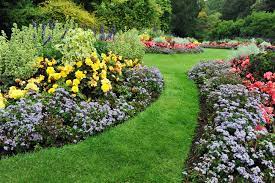
How to Sharpen Your Garden Tools
A well-maintained garden is a happy garden. Sharp tools make for happier gardening. Having to work with dull tools is frustrating and takes twice as long. No one wants that! In this blog post, we will explore some of the best ways to sharpen your garden tools.
First, let’s start with why it’s important to have sharp tools. When your tools are sharp, you can make cleaner cuts. This is important because it helps your plants heal faster and prevents disease or pests from entering through jagged wounds. In addition, sharp tools are just plain easier to use. You won’t have to struggle as much, and your gardening experience will be more pleasant overall. Trust us – your plants will thank you!
Now that we’ve established why having sharp tools is so important, let’s move on to how you can achieve this goal. Below, we’ll outline some of the best methods for keeping your garden tools in tip-top shape.
The most important thing to remember when sharpening your garden tools is to use the right tool for the job. For example, pruning shears should be sharpened with a file designed specifically for that purpose. The same goes for hoes, shovels, spades, and other larger tools – each type of tool requires a different method of sharpening. It’s also important to use a file that matches the material of your tool. For instance, if you’re working with an aluminum shovel, don’t use a steel file – it will damage the surface of your shovel beyond repair.
With that said, here are some general tips for sharpening all types of garden tools:
– Start by cleaning off any dirt or debris from your tool using a wire brush or old toothbrush. This will help you get a better idea of where you need to focus your efforts.
– Next, use a medium-grit sandpaper to remove any rust that has built up on your tool. If necessary, you can also use a chemical rust remover – just be sure to read the instructions carefully before doing so!
– Once the rust has been removed, it’s time to start sharpening. If possible, try to do this outdoors so that any metal filings don’t end up clogging your sink or getting tracked into your house. Begin by using a coarse-grit file to get rid of any nicks or chips in the blade (or head) of your tool. Once you’ve done that, move on to a finer-grit file until you’ve achieved the desired level of sharpness.
– Finally, once you’re satisfied with how sharp your tool is, apply a thin layer of oil (such as WD-40) to help protect it from rusting in the future. And that’s it! With just a bit of elbow grease (and maybe a little patience), you can keep all of your garden tools properly maintained and ready for action.
We hope this blog post has been helpful in showing you how easy it is to sharpen your own garden tools! As we mentioned before, having well-maintained equipment makes gardening much more enjoyable – not to mention efficient. So next time you’re feeling frustrated with dull shears or a rusty hoe, remember these tips and give them a try. Your plants (and wallet) will thank you!
What is the best way to sharpen garden tools?
What sharpener is best for pruners? I find the best way to sharpen pruners is with diamond files. I prefer them to whetstones because they are easy to use, even for a novice. You’ll need three levels of coarseness (known as grits): coarse, fine, and extrafine. The files are inexpensive and will last longer than your pruners.
What is the easiest way to sharpen garden shears?
What tool is used to sharpen gardening tools? As with secateurs, garden knives can be sharpened with a whetstone, diamond tool or sharpening steel. Here we look at some step-by-steps using a whetstone.